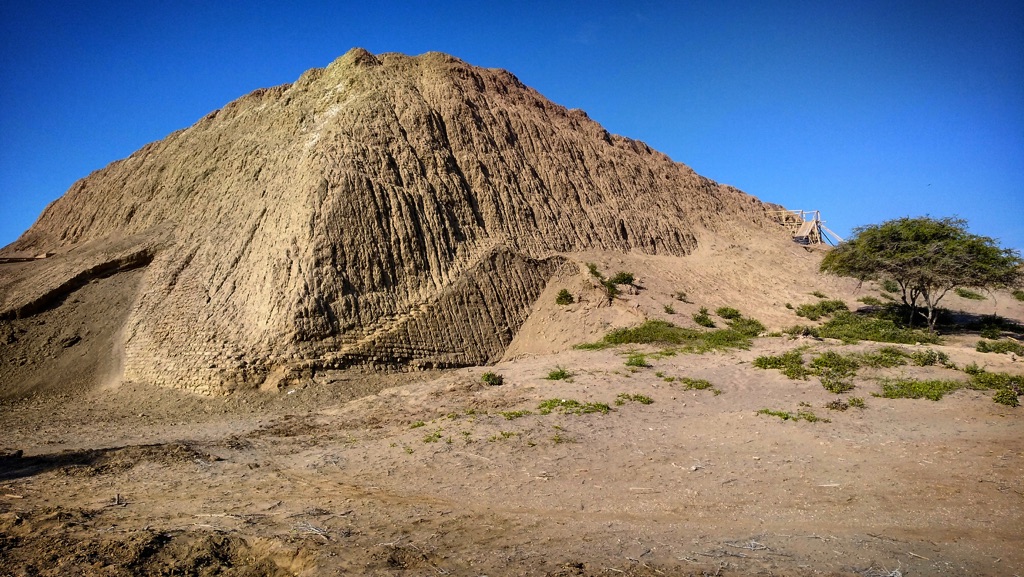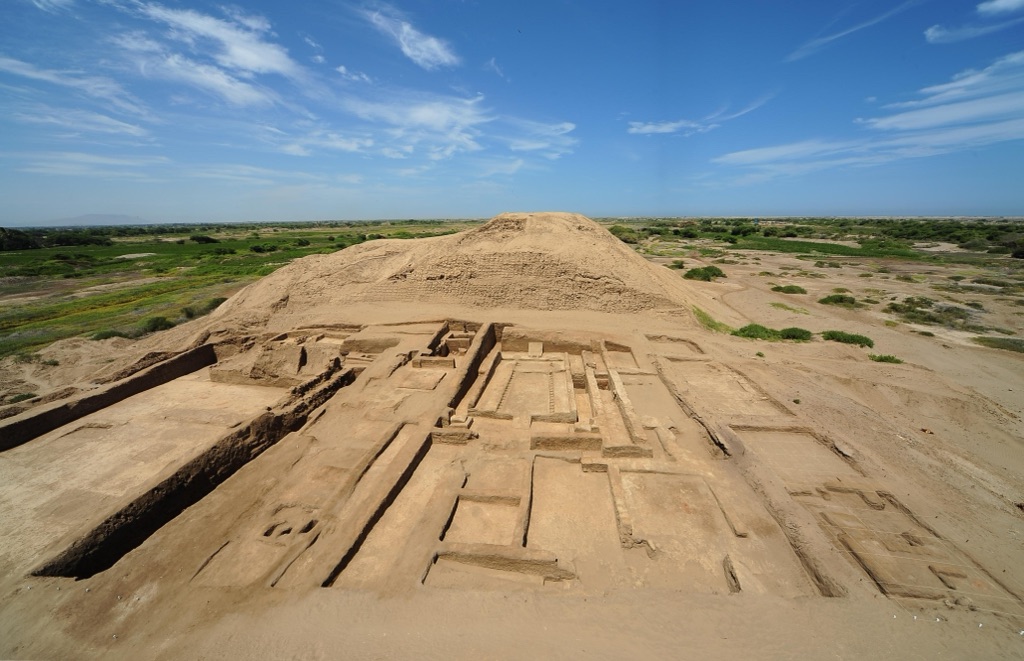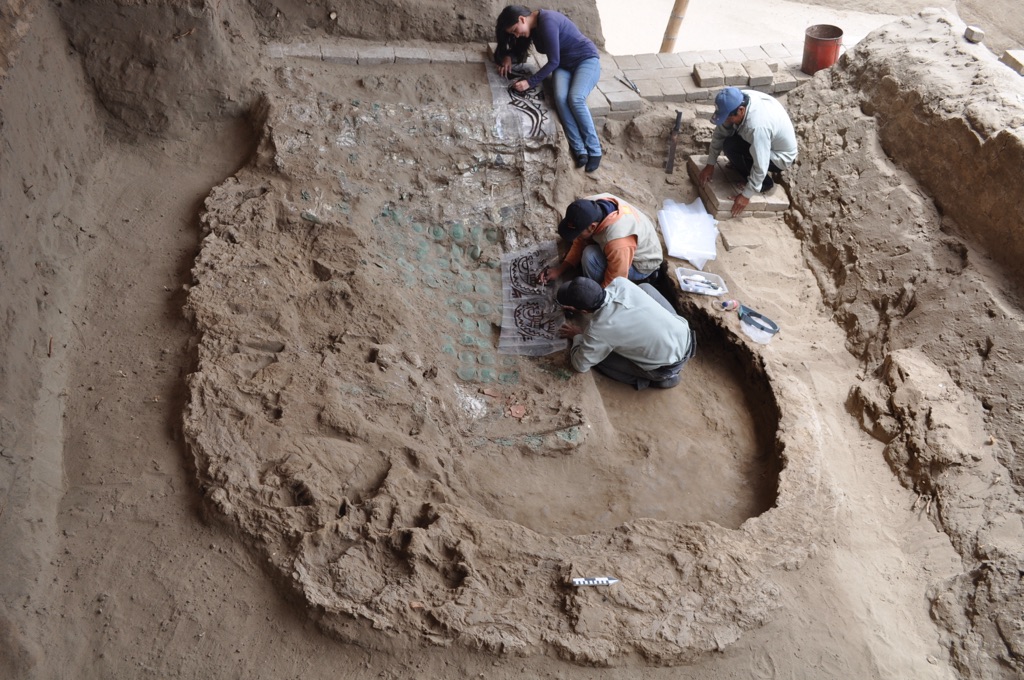The Chotuna Chornancap Archaeological Complex is a significant pre-Columbian site located in the Lambayeque region of Peru. It encompasses a series of pyramids, plazas, and tombs that date back to the Sicán culture, which thrived from approximately 750 to 1375 AD. The site is notable for its grand architecture and the valuable artifacts discovered there, which provide insights into the religious and political systems of ancient Andean civilizations. The complex has been a focal point for archaeological studies, revealing a rich tapestry of cultural heritage and historical significance.
Get your dose of History via Email

Historical Background of Chotuna Chornancap Archaeological Complex
The Chotuna Chornancap Archaeological Complex was discovered in the early 20th century. However, it wasn’t until recent decades that extensive excavations began. The site was built by the Sicán culture, also known as the Lambayeque culture. This civilization is known for its metallurgy, particularly in gold. The complex served as a religious and administrative center. It later became a place of significance for the Chimú and Inca cultures.
Archaeologists have unearthed evidence of human occupation at the site dating back to at least 800 AD. The complex was likely in use until the late 15th century, coinciding with the Inca expansion. The site’s discovery and subsequent excavations have been led by various teams, including those directed by Peruvian archaeologist Carlos Wester La Torre.
The builders of Chotuna Chornancap were master craftsmen and engineers. They created a sprawling complex of monumental structures. The site has also been the scene of significant historical events, including ritual activities and elite burials. These events are evidenced by the numerous high-status tombs found within the complex.
Over time, the site was not only a religious center but also a strategic political hub. It was inhabited by successive cultures, each leaving their mark. The Chimú and later the Inca utilized the site, integrating it into their respective empires. The complex thus provides a continuous historical record from the Sicán to the Inca period.
The Chotuna Chornancap Archaeological Complex has also been the site of important discoveries, such as the tomb of the Priestess of Chornancap. This find shed light on the role of women in ancient Andean societies. The site continues to be an important location for understanding pre-Columbian history in the region.
About Chotuna Chornancap Archaeological Complex
The Chotuna Chornancap Archaeological Complex is a testament to the architectural prowess of the Sicán culture. The site features several pyramids, the largest of which is approximately 30 meters high. These pyramids were constructed using adobe bricks, a common building material in the region.
The complex’s layout includes plazas and platforms that likely served ceremonial purposes. The architecture suggests a high degree of social organization and religious significance. The site’s design aligns with the cosmology and mythology of the Sicán culture.
One of the architectural highlights of the complex is the intricate network of canals. These canals provided water for the site and its inhabitants. They are a testament to the advanced engineering skills of the Sicán people.
The construction methods of the complex reflect the technological capabilities of the time. The use of adobe allowed for the creation of large, stable structures that have withstood the test of time. The site’s buildings also feature decorative elements, such as friezes and murals, which provide insight into the artistic traditions of the culture.
The Chotuna Chornancap Archaeological Complex is not only an archaeological treasure but also a cultural heritage site. It offers a window into the past, showcasing the ingenuity and beliefs of the people who built it.
Theories and Interpretations
Several theories have emerged regarding the use of the Chotuna Chornancap Archaeological Complex. The most widely accepted theory is that it served as a ceremonial and political center. The presence of tombs suggests it was a sacred site for elite burials.
The discovery of the Priestess of Chornancap’s tomb has led to theories about the role of women in Sicán society. Some scholars suggest that women held significant religious and political power. The elaborate nature of the tomb supports this theory.
There are mysteries surrounding the complex, such as the purpose of certain structures. Some buildings may have had astronomical significance, aligning with celestial events. This theory is supported by the site’s orientation and the positioning of certain architectural features.
Historical records from later cultures, such as the Inca, have been used to interpret the site. However, the lack of written records from the Sicán themselves means that much of the site’s history is pieced together from the archaeological evidence.
Dating of the site has been carried out using methods such as radiocarbon dating and analysis of ceramic styles. These methods have helped establish a timeline for the construction and use of the complex.
At a glance
Country: Peru
Civilization: Sicán Culture (Lambayeque culture), later occupied by the Chimú and Inca cultures
Age: Approximately 750 to 1375 AD (Sicán period)
Conclusion and Sources
The Chotuna Chornancap Archaeological Complex offers a fascinating glimpse into the ancient cultures of Peru. Its study contributes to our understanding of pre-Columbian history and the development of Andean civilizations.
Reputable sources used in creating this article include:


